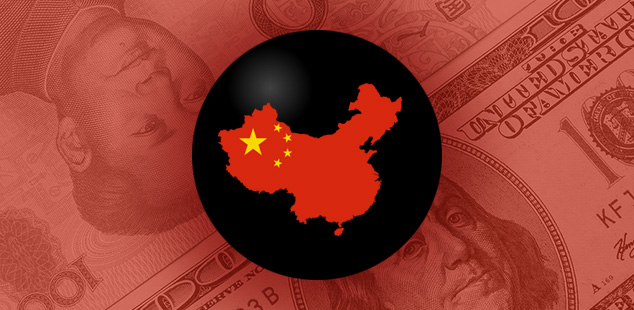
In what many see as a planned tactical move in a long-term strategy, the central bank recently proposed—again—to overhaul the global financial system with a brand new international currency. Gov. Zhou Xiaochuan, Beijing’s governor of the People’s Bank of China, was quoted in an essay put out by the bank (in both English 1 and Chinese) as warning of the “…inherent vulnerabilities and systemic risks in the existing international monetary system.” The bank’s leader proposed creating a new, international currency that would be backed by a basket of currencies selected from the world’s governments and controlled by the IMF, which would essentially undermine the dollar’s power in the global marketplace.
Danger to the Dollar
China’s proposal of a new currency just prior to a summit in London on the current financial crisis held by the International Monetary Fund was no off-handed idea. China has aggressively worked in recent years to seek reforms in international financing, and especially the decades-old role of the U.S. dollar as the international reserve currency. In fact, though not mentioned by name, the dollar is implicated here, as it has been the dominant trade currency around the world for decades.
However, this particular idea is not a new one, and it was quickly discounted by most officials. The idea of such a global currency has been discussed since the Bretton Woods Conference, but has never gained any traction due to the difficulties involved. Nonetheless, the IMF does currently base the value of its Special Drawing Rights on four leading currencies that include the euro, yen, British pound and U.S. dollar. Xiaochuan also called for a change in this method of setting the value of SDRs.
Yuan vs. Dollar
China has not been bashful about expressing its frustration over the dominance of the dollar as the primary global reserve currency. This concern extends to the dollar serving as the favored pricing currency for most commodities. Compounding this frustration is the fact the country has been forced to invest much of its trade surplus in those very U.S. dollars to keep its own currency stable. In spite of the devaluation of the yuan in 2015 as a way of flexing its international monetary muscle, China still has not gained much ground in achieving the respect it desires.
Reflecting the consensus of most non-Chinese officials and experts, EU Commissioner Joaquin Almunia stated, “Everybody agrees also that the present world reserve currency, the dollar, is there and will continue to be there for a long period of time.” U.S. officials did not waste any time in expressing similar views, including Treasury Secretary Timothy Geithner and Federal Reserve Chairman Ben Bernanke.
Threat of China
Notwithstanding such views, many market observers note that it is increasingly hard to ignore the rapid rise of China as a world power. Whereas it was formerly the United States that had the huge trade surpluses, an annual budget surplus, and the world’s largest military, it is China that now claims those titles. Moreover, Dick Bove, a highly respected bank analyst, points out the dramatic shift in economic status by pointing out, “2013, for every dollar at federal reserves, China has $5.60.”
One significant response to the ongoing uncertainty of the world economic situation, as well as these growing challenges to the U.S. dollar by China and others is seen in the move to gold and precious metals. Viewed by many as a source of safety and stability, buying gold has shown to reward investors with both resiliency and continuing interest across a broad front.
Additional Sources:
1 – http://www.pbc.gov.cn/english/130724/2842945/index.html

